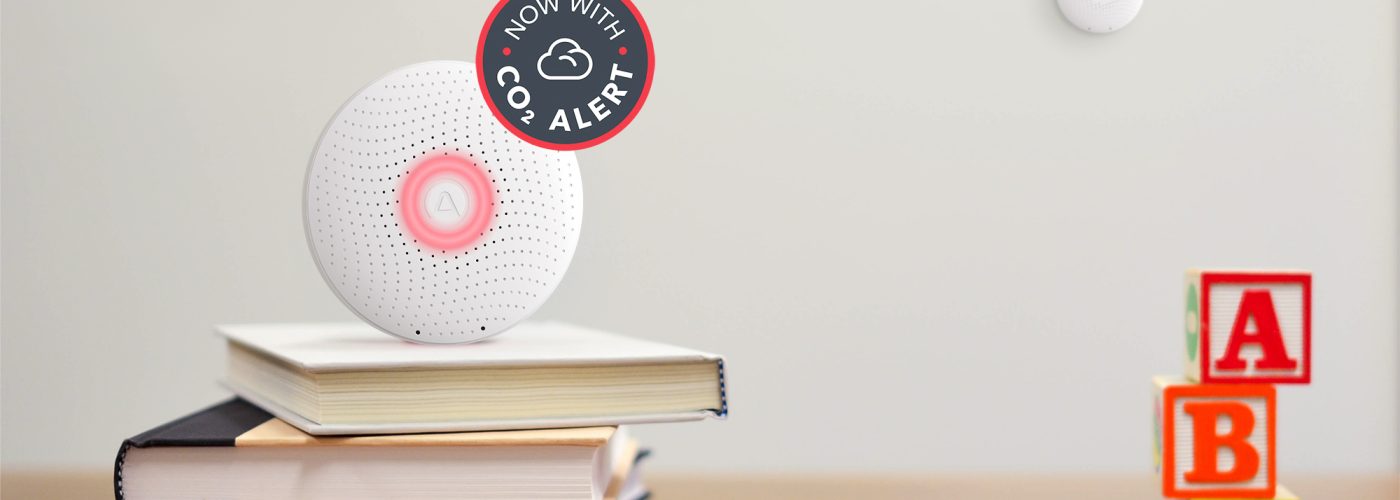Airthings, a global leader in indoor air quality solutions for consumers, businesses, and professionals announced a new feature for its business solution: CO₂ Alert. The new capability will help schools and offices to keep their indoor air quality in check by warning them when Carbon Dioxide (CO₂) exceeds the recommended levels.
High CO₂ levels can increase the risk of airborne viruses spreading between people and impact cognitive abilities. By letting users know when a room needs a breather, they can make quick changes, such as opening a window or door, to improve the air quality. CO₂ Alert will start rolling out from today to new and existing Airthings for Business customers at no additional cost.
In the midst of the current pandemic, effective ventilation has become an important strategy for reducing the spread of COVID-19 inside offices and schools. When we breathe out, our bodies expel CO₂, and the levels can rise quickly in enclosed spaces. This can significantly increase the risk of airborne virus transmission. Measuring CO₂ levels serves as a good indicator of indoor air quality and ventilation, and as a result, carbon dioxide regulations are becoming more common in offices and schools across Europe.
“Schools and offices are under immense pressure to ensure their buildings protect the health and wellness of their occupants,” says Oyvind Birkenes, CEO at Airthings. “The Airthings for Business solution not only measures CO₂, but also other indoor pollutants and conditions that impact our health, productivity, and wellbeing. With the new CO₂ Alert, we go one step further in empowering our customers to take control of the air they breathe, making it easier to take action when it’s needed.”
How it works
The new CO₂ Alert feature will be available via the Wave Plus for Business, Airthings’ flagship product, named one of TIME Magazine’s “100 Best Inventions.” Users will be able to set up CO₂ thresholds according to their local regulations. When CO₂ exceeds the recommended levels, the light ring will start to blink red, indicating that it is time to bring more fresh air into the room. By waving the hand in front of the device at any time, users will get a colour-coded indication of the CO₂ levels (green means the levels are low, yellow means the levels are rising, and red means an action is required).
The impact of poor indoor air quality
We spend 90% of our time indoors, where the air is typically 2 to 5 times worse than outdoors. When CO₂ builds up in poorly ventilated spaces, it can cause lower productivity, drowsiness, headaches, loss of concentration, and even poor decision-making. Scientists found that decision-making capabilities decline when levels rise to 1,000 ppm, while 1,400 ppm sees a 50 percent drop in cognitive ability.
In addition to CO₂, there are other indoor air pollutants that impact our health and wellbeing, from airborne chemicals to radon, the number one cause of lung cancer among non-smokers. Conditions such as humidity and temperature are also important factors to monitor as both are correlated with virus transmission.
Today, many schools and offices are located in buildings that have not been optimized for occupant health. While some ventilation systems recycle the air to conserve energy, bringing in fresh air is essential to ensure a healthy indoor environment. Continuous monitoring and familiarization with what’s in the air through technology solutions like Airthings for Business can help schools and offices improve their indoor air quality while optimizing energy consumption.
Set up in a matter of minutes, the Airthings for Business solutions is made of wireless monitors and run on long-lasting batteries, making the solution easily scalable and customizable to any new or existing space. Indoor air quality data is easily available via the Airthings Dashboard and users can create reports to ensure they are in compliance to local laws and regulations.





